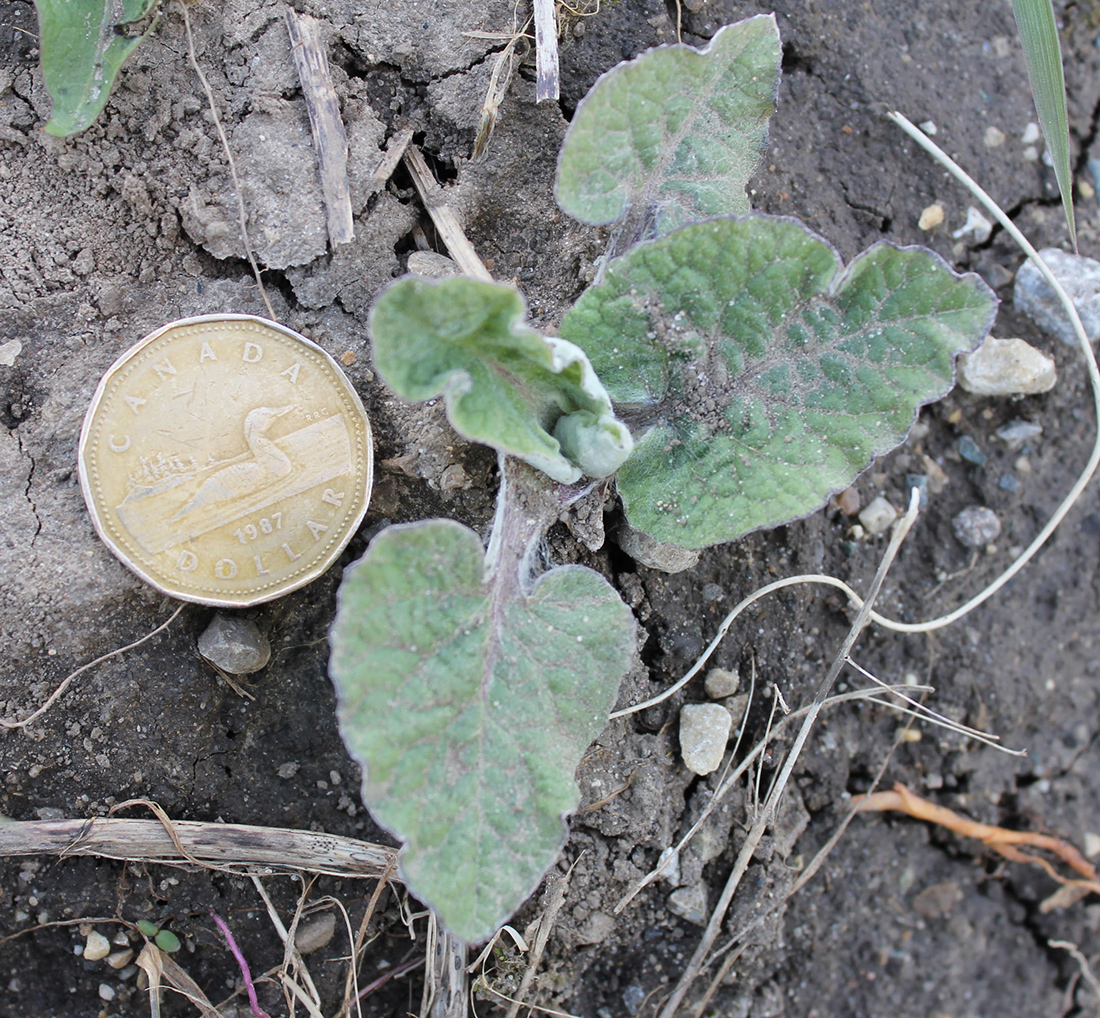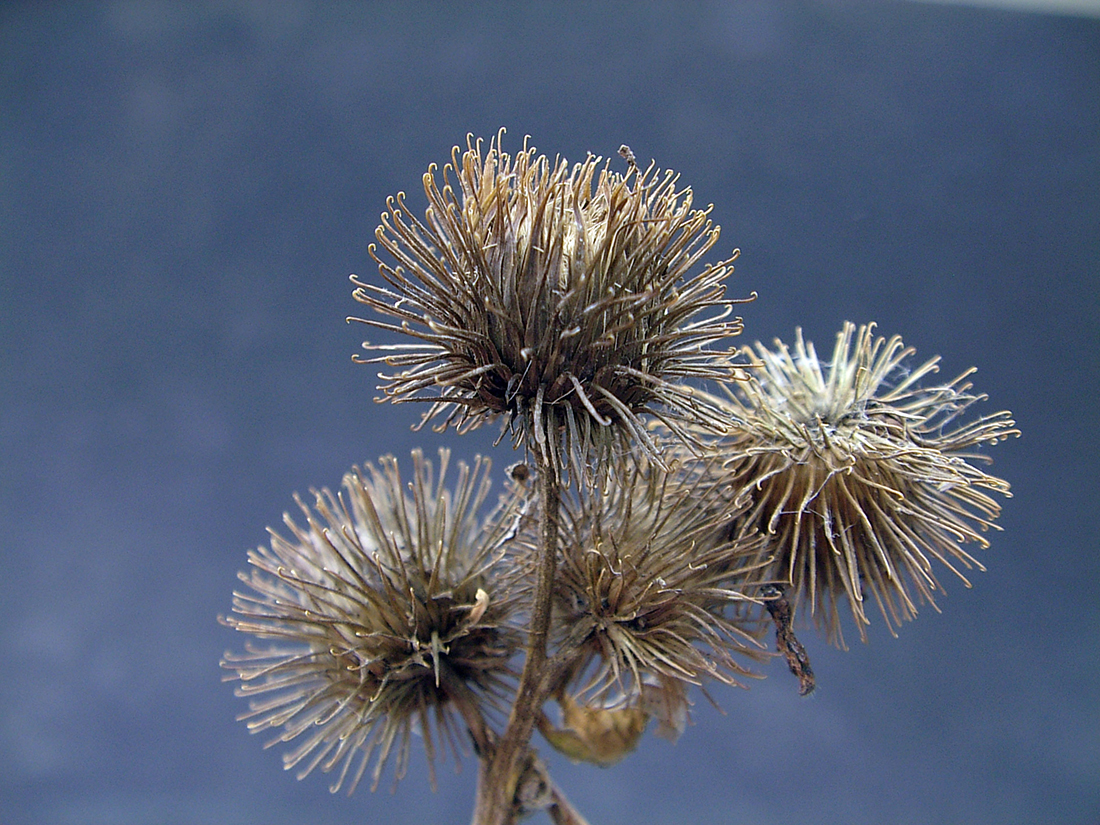Common Burdock
- Composite or Aster (Asteraceae family):
- Arctium minus Bernh.
- EPPO code:
- ARFMI
- Other names:
- Burdock, burs, clotbur, lesser burdock, wild burdock, wild rhubarb
Species information
- Lifecycle:
- Biennial
- Propagation:
- Reproduces by seed.
- Emergence:
- Seedlings emerge early in the spring.
- Range and habitat:
- Most commonly found around field boundaries but can creep into cultivated fields especially in cropping systems with reduced tillage.
- Competitiveness:
- Unknown, but impedes crop establishment and can smother out other vegetation.
Identification clues
Leaves
- Cotyledons:
- Oblong with conspicuous veins.
- Young leaves:
- In a basal rosette, round to oval shape with wavy margins and prominent veins.
- Mature leaves:
- Resembling rhubarb but with undersides having white woolly hairs.
Mature plant
- Stem:
- Erect, 60–180 cm tall, branched, thick, hollow and grooved lengthwise.
- Flowers:
- round and densely covered with purplish to white hooked bristles, either having one on a short stalk or in clusters at the end of branches; flowers from July to September; when mature are brown and easily break off with the burs clinging to clothing, and animal fur; angular seed is contained within the burs.
Similar species
Common burdock is a very distinct plant that is rarely confused with any other plants. There is, however, another burdock plant in Ontario called “great burdock.” It is difficult to tell the two species apart at the vegetative stages but at the flowering stages there are two points of differentiation. Firstly, great burdock flowers are typically larger and with a paler colour. Secondly, the flowers of great burdock are less clustered and are at the end of much longer stalks.





Updated: January 13, 2023
Published: January 13, 2023